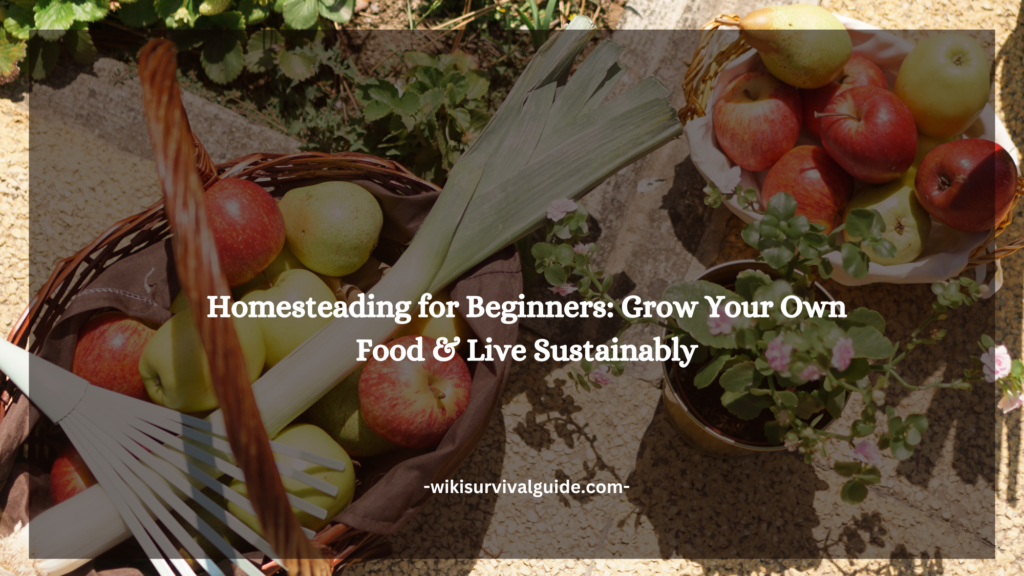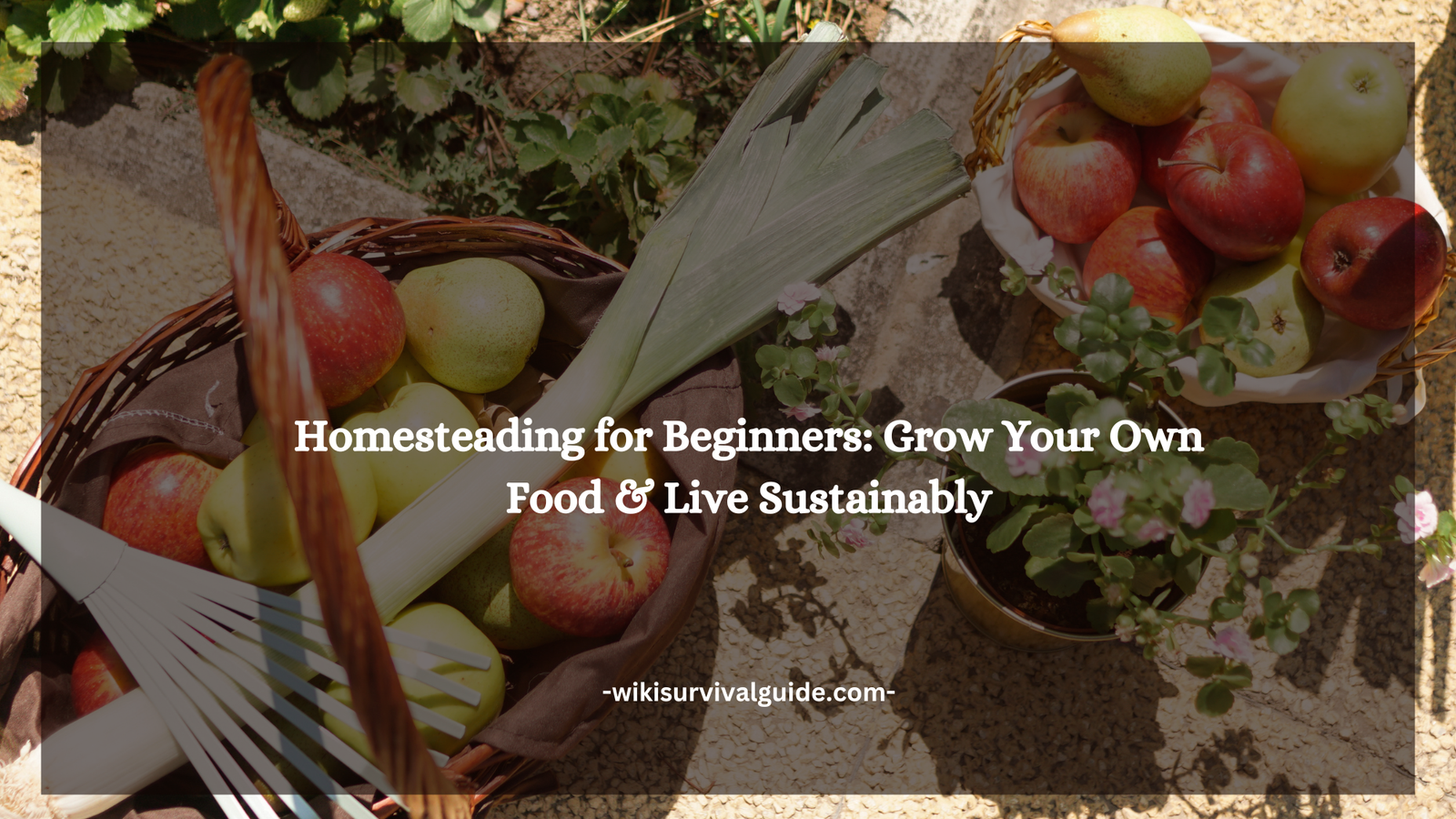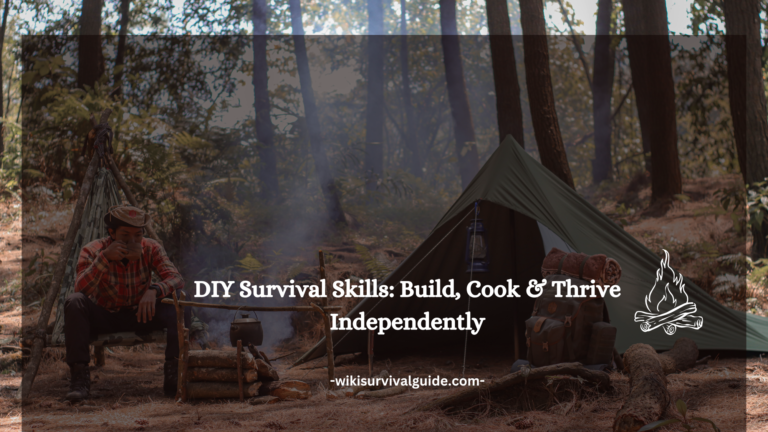Homesteading is a lifestyle that embraces self-sufficiency, sustainability, and a closer connection to nature. Whether you’re looking to grow your own food, raise livestock, or generate renewable energy, starting a homestead allows you to take control of your resources and live a more independent life.
In this guide, we’ll cover everything you need to know to begin your journey—from choosing the right land to growing your own food and raising animals.

What is Homesteading?
Homesteading is the practice of self-sufficient living by growing food, raising animals, and producing essential resources like water and energy. Some homesteaders live off the grid, while others balance modern conveniences with traditional practices.
The goal of homesteading is to reduce dependence on external systems, minimize environmental impact, and create a sustainable way of life.
How to Start a Homestead
Choosing the Right Land
The first step in homesteading is selecting the right piece of land. Consider the following factors:
- Soil quality: Fertile soil is essential for growing crops.
- Water availability: Access to a natural water source or well is crucial.
- Climate: Choose a location that supports the crops and livestock you plan to raise.
- Zoning laws: Research local regulations on farming, livestock, and land use.
Planning Your Homestead Layout
A well-planned homestead maximizes efficiency and sustainability. Key areas to consider include:
- Gardens and greenhouses for food production.
- Animal enclosures for livestock.
- Water collection systems such as rain barrels or ponds.
- Energy sources like solar panels or wind turbines.
Growing Your Own Food
One of the most rewarding aspects of homesteading is growing your own food.
Best Crops for Homesteading
These crops are ideal for beginners:
- Vegetables: Tomatoes, carrots, lettuce, and potatoes.
- Fruits: Apples, strawberries, and blueberries.
- Grains: Corn, wheat, and oats.
- Herbs: Basil, rosemary, and mint.
Seasonal Gardening Tips
- Spring: Start seedlings indoors and plant cold-hardy crops.
- Summer: Water frequently and protect plants from extreme heat.
- Fall: Harvest crops and prepare soil for winter.
- Winter: Use cold frames or greenhouses for year-round gardening.
Raising Livestock for Food & Sustainability
Livestock can provide meat, eggs, dairy, and even fertilizer for your garden.
Best Animals for Small Homesteads
- Chickens: Provide eggs and meat with minimal space.
- Goats: Great for milk production and land clearing.
- Rabbits: Easy to care for and reproduce quickly.
- Bees: Produce honey and help with pollination.
How to Care for Livestock
- Provide clean water and nutritious feed daily.
- Build shelters to protect animals from extreme weather.
- Rotate grazing areas to prevent overuse of land.
- Learn basic veterinary care to maintain animal health.
Building a Sustainable Homestead
Renewable Energy Sources
To reduce reliance on traditional power grids, homesteaders often use:
- Solar panels for electricity and heating.
- Wind turbines for additional power.
- Hydropower if a natural water source is available.
A great resource for sustainable homesteading can be found at this site.
Water Conservation and Collection
- Rainwater harvesting with barrels or cisterns.
- Greywater recycling for watering plants.
- Drip irrigation systems to conserve water in gardens.
Essential Homesteading Skills
To succeed as a homesteader, you need to develop a variety of skills, including:
- Food preservation: Canning, fermenting, and dehydrating.
- Basic carpentry: Building shelters, fences, and coops.
- Gardening and permaculture: Designing an efficient food system.
- First aid and animal care: Managing minor injuries and illnesses.
Challenges of Homesteading
Homesteading is rewarding, but it comes with its challenges:
- Time commitment: Daily tasks like feeding animals and tending crops.
- Weather dependency: Crops and animals can be affected by extreme weather.
- Initial investment: Land, tools, and livestock require upfront costs.
- Learning curve: Homesteading involves ongoing learning and adaptation.
Despite these challenges, many find homesteading to be an incredibly fulfilling lifestyle.
Final Thoughts
Homesteading for beginners may seem overwhelming, but with the right knowledge and preparation, it can be a rewarding journey toward self-sufficiency. By growing your own food, raising animals, and using renewable energy, you can create a sustainable lifestyle that benefits both you and the environment.
Are you ready to start your homesteading adventure? Take it one step at a time and enjoy the journey!
FAQs
1. How much land do I need to start homesteading?
It depends on your goals. A small backyard can support a garden and chickens, while a larger property is needed for livestock and crops.
2. Do I need to live off the grid to be a homesteader?
No. Some homesteaders integrate modern conveniences while focusing on sustainability.
3. Is homesteading expensive to start?
There are upfront costs, but homesteading can save money in the long run by reducing grocery and utility bills.
4. What are the easiest crops for beginners?
Tomatoes, lettuce, carrots, and herbs are great beginner-friendly crops.
5. Can I homestead in an urban setting?
Yes! Urban homesteading includes container gardening, rooftop gardens, and small-scale livestock like chickens and rabbits.




1 Comment